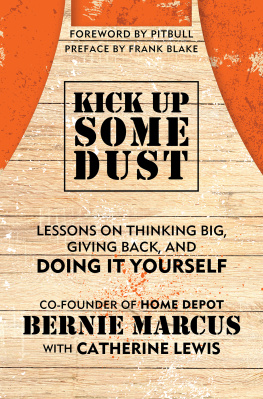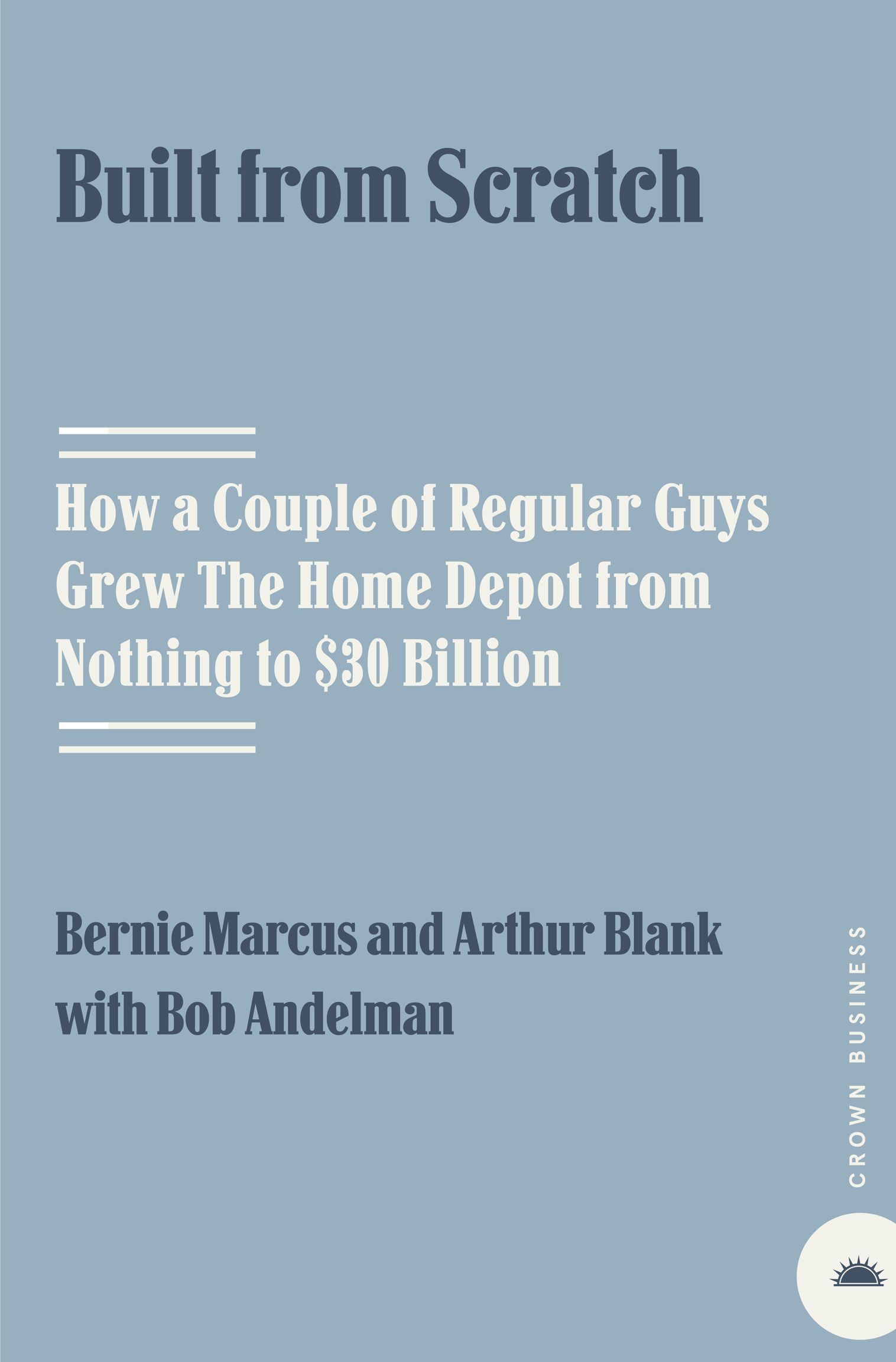Introduction
We Take Care of the Customer and Each Other
You want a formula for success? Take two Jews who have just been fired, add an Irishman who just walked away from a bankruptcy and an Italian running a no-name investment banking firm. Addthen subtractRoss Perot. Lease space from a shrinking discount chain, fill a space the size of a football field full of hardware (and a few hundred empty boxes), and youve got a company.
At least thats the way we did it.
The creation of The Home Depot began with two words in the spring of 1978: Youre fired!
Twenty years ago, we were two out-of-work executives. Our situation was not a lot different than millions of others who were shown the door. We had little in the way of capital and faced some daunting personal and legal challenges as we tried to get our careers back on track.
In our early years, we lived on the edge, with no balance sheet and a lack of financing. It took great romancing to establish the vendor base necessary to open and maintain the broad product selection for which we quickly became known. We were always pushing boundaries beyond where our industrys conventional wisdom suggested we could go.
And it paid off: In just twenty years, our company, The Home Depot, has multiplied exponentially from four stores in Atlanta to 775 stores, 160,000 associates, and $30 billion in sales. Almost all of our growth has come from internal expansion and very little through acquisition. How did we and our associates do it?
Building The Home Depot was a tough, uphill battle from the day we started in a Los Angeles coffee shop shortly after we were fired. No one believed we could do it, and very few people trusted our judgment. Or they trusted our judgment, but just didnt think the whole concept of a home improvement warehouse with the lowest prices, best selection, and best service was going to work. They certainly didnt realize that what we were planning would turn out to be a revolution in the retail business.
While we want to tell the story of The Home Depot because its a great entrepreneurial tale, our larger goal is to convey what we learned along the way about customers, associates, competitors, growing a business, building a brand, and many other topics everyone in business needs to know.
Were two regular guys from similar modest personal backgrounds and religious orientation who were given a strong drive to succeed by our respective parents. The values that form the core of The Home Depots business philosophy are bigger than one person. They developed from our families as well as from key business experiences in the early days of our careers.
This book is the story of that virtually unparalleled growth and the values and culture that nourished it.
But were not a company thats just about numbers. The numbers are important as a measure of our success. But weve attained them because of a culture that is agile and flexible enough to change direction as quickly as events demand it. When something isnt working in our stores, we dont keep doing it the wrong way simply because the rules say to do it that way. Instead, we do it the right way and change the rules. We do things because theyre the right things to do for our customer.
A set of eight values has been our bedrock for the past twenty years. Although they were not put in writing until 1995, these valuesthe basis for the way we run the companyenabled us to explode across the North American landscape and will be the vehicle for reaching our ambitious goals in the international marketplace.
Were only as good as our peopleespecially the men and women working in our stores every day. If the front line isnt absolutely committed to the cause, we cant win. Thats why we believe a sure way of growing this company is to clearly state our values and instill them in our associates. Values are beliefs that do not change over time; they guide our decisions and actions. They are the principles, beliefs, and standards of our company. We call this process of enculturation breeding orange.
In summary, we care about the customer and we care about each other. As youll see throughout this book, our values are not platitudes that are dead on arrival on a lobby wall plaque, but are the spine that shapes the way we do business. These are The Home Depots core values, although they are so universal that they should apply to every company:
Excellent customer service. Doing whatever it takes to build customer loyalty.
Taking care of our people. The most important reason for The Home Depots success.
Developing entrepreneurial spirit. We think of our organizational structure as an inverted pyramid: Stores and customers are at the top and senior management is on the bottom.
Respect for all people. Talent and good people are everywhere, and we cant afford to overlook any source of good people.
Building strong relationships with associates, customers, vendors, and communities.
Doing the right thing, not just doing things right.
Giving back to our communities as an integral part of doing business.
Shareholder return. Investors in The Home Depot will benefit from the money theyve given us to grow our business.
Our values empower people to be their best. If we can implant a value system that lets them apply their basic goodness and ingenuity to The Home Depot and its customers, thats all we need to succeed. That will allow them to do all the right things without us having to constantly tell them.
Nobody loves a company. A company is just a sign. Nobody loves brick and mortar.
These values are our company. They are our belief system, and we believe in them as much today as we did when the first Home Depot stores opened in June 1979. Without them, were no different than our competition. Our competitors could copy them just as theyve copied our stores, products, and merchandising ideas. But they would have to believe in the ideas underlying these values to make them effective, and thats a tough step to take.
The Home Depotand other companies, such as Wal-Marthave helped create a consumer revolution through low prices and wider availability of products that was unimaginable twenty years ago. Many of the products now offered by The Home Depot were either too expensive or available only through contractors. Contractors could only get them from distributors or wholesalers and, after all of the markups, many home improvement projects were beyond the means of many middle-class people. Who would have thought that today an average person could walk into a store and buy a complete designer kitchen for $3,000 and get the knowledge to install it at no extra cost? We helped create a market of male and female weekend warriors who confidently glide from project to projectand call on us for assistance whenever they hit a rough spot.












